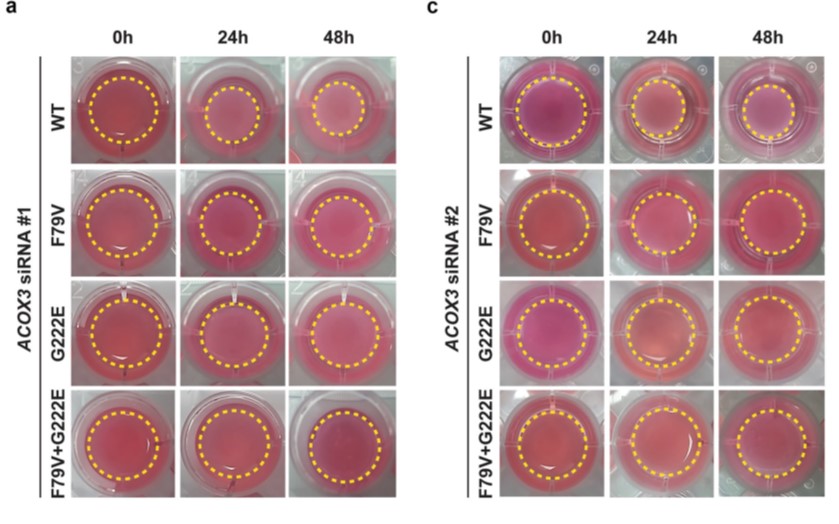Collagen Contraction Assay with Rat Tail Collagen
01/27/20
Publication Title:
ACOX3 Dysfunction as a Potential Cause of Recurrent Spontaneous Vasospasm of Internal Carotid Artery
Advanced BioMatrix Products Used:
RatCol® type I rat tail collagen (4 mg/ml) and the neutralization solution (included with the rat tail collagen kit)
How the products were used:
Our collagen was used to form 3D hydrogels that were seeded/embedded with HASMC's. The collagen hydrogels were measured every 24 hours as part of a collagen contraction assay.

Article Abstract:
Recurrent spontaneous vasospasm of the extracranial internal carotid artery (RSV-eICA) is a rarely recognized cause of ischemic stroke in young adults. However, its pathophysiology remains largely unknown. Through whole-exome sequencing of the ACOX3 gene of two dizygotic Korean twin brothers affected by RSV-eICA, we identified two compound heterozygous missense variants c.235 T >G (p.F79 V) and c.665G>A (p.G222E). In silico analysis indicated that both variants were classified as pathogenic. In vitro ACOX3 enzyme assay indicated practically no enzyme activity in both F79 Vand G222E mutants. To determine the effect of the mutants on vasospasm, we used a collagen contraction assay on human aortic smooth muscle cells (HASMC).
Carbachol, a cholinergic agonist, induces contraction of HASMC. Knockdown of ACOX3 in HASMC, using siRNA, significantly repressed HASMC contraction triggered by carbachol. The carbachol-induced HASMC contraction was restored by transfection with plasmids encoding siRNAresistant wild-type ACOX3, but not by transfection with ACOX3 G222E or by co-transfection with ACOX3 F79Vand ACOX3 G222E, indicating that the two ACOX3 mutants suppress carbachol-induced HASMC contraction. We propose that an ACOX3 dysfunction elicits a prolonged loss of the basal aortic myogenic tone. As a result, smooth muscles of the ICA’s intermediate segment, in which the sympathetic innervation is especially rich, becomes hypersensitive to sympathomimetic stimuli (e.g., heavy exercise) leading to a recurrent vasospasm. Therefore, ACOX3 dysfunction would be a causal mechanism of RSV-eICA. For the first time, we report the possible involvement of ACOX3 in maintaining the basal myogenic tone of human arterial smooth muscle.



